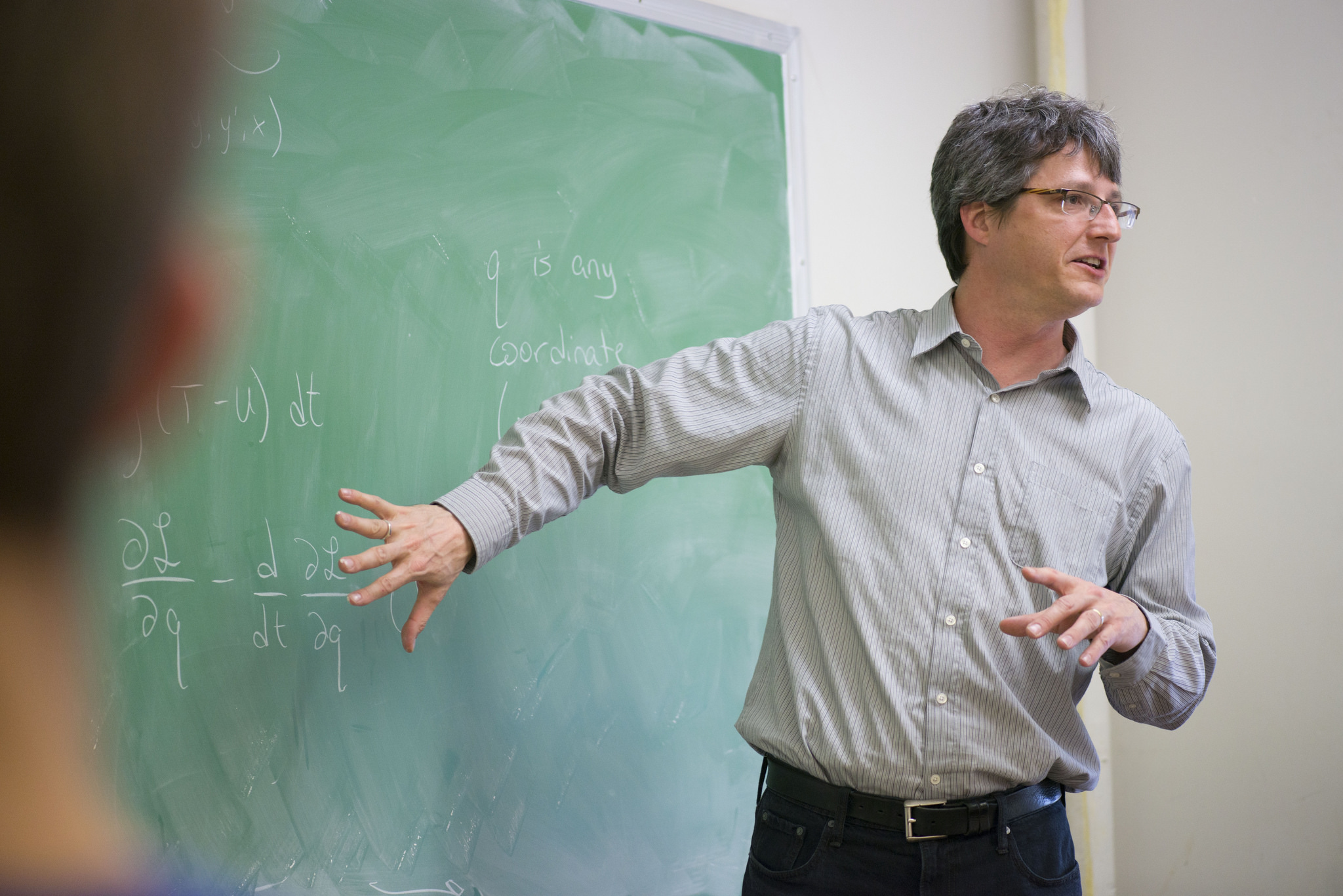Integrated Approaches for Physics Education
Professor Michael C. Wittmann
In the Integrated Approaches physics courses, we pulled together three different kinds of activities. First, we went through research-based teaching materials as a way of both learning content and understanding effective group learning activities. Second, we read and discussed the research literature that led to the development of these materials. Finally, we learned about the education research that was used in the studies, emphasizing the connection between research and teaching and helping course students develop the skills to listen to students in the moment and respond to them effectively in the classroom.
In Integrated Approaches I, we focused on electric circuits, kinematics, and dynamics, while developing skills for writing open ended questions and analyzing multiple choice responses. In Integrated Approaches II, we focused on waves and energy, while developing skills for classroom observations and interviews. For more information about the two semesters of instruction, click here:
Integrated approaches in physics education: A graduate level course in physics, pedagogy, and education research
To evaluate the effectiveness of this work, researchers have investigated how students in the course develop their understanding of one particular area: electric circuits. Results suggest that the quality of future teachers’ responses on questions dealing with knowledge of student ideas may be higher for those with a nonphysics background than those with a physics background. Check out this link to find out more:
Preparing future teachers to anticipate student difficulties in physics in a graduate-level course in physics, pedagogy, and education research
Additional Background about Course Improvements for this Course
This course enhancement project consisted of efforts to: (1) place greater emphasis on standards, including inTASC and NGSS, (2) place greater emphasis on NGSS practices, (3) strengthen the analysis of existing materials examined in the course to focus on the pedagogical methods and practices involved, (4) modify grading and assessment methods, including oral exams and essays. In Fall 2014, SMT 501, Integrated Approaches in Physics Education I, had an increased emphasis on both the NGSS standards and InTASC standards. Because of scheduling of instructional topics, less emphasis was placed on InTASC and more was placed on NGSS standards. This complemented the original design of the course, namely to show how research on student learning leads to teaching materials that are shown to improve learning. The NGSS provides guidelines for what to teach when as well as which scientific practices are best for doing so. By focusing on NGSS standards, students could connect this research on teaching and learning with the overall instructional structure that will guide their future professional work as teachers.
Classroom activities included an analysis of teaching materials based on NGSS guidelines as described in the K12 Framework for the NGSS – which practices were involved, whether the methods of existing materials matched those of the NGSS, and which ideas from the NGSS were represented in the physics education research literature and which were not. Given the very small class size and issues related to content understanding of several of the students, we spent less time engaging deeply with the NGSS than was originally planned.
Assessment of student knowledge of the NGSS was through an essay assignment that was part of a class exam. The essay question was not well designed, and results were inconclusive. Better knowledge of student understanding came from in-class discussions, from which it became clear that the students recognized the importance of the NGSS but did not yet have a deep understanding of the coherent structure of the NGSS.


